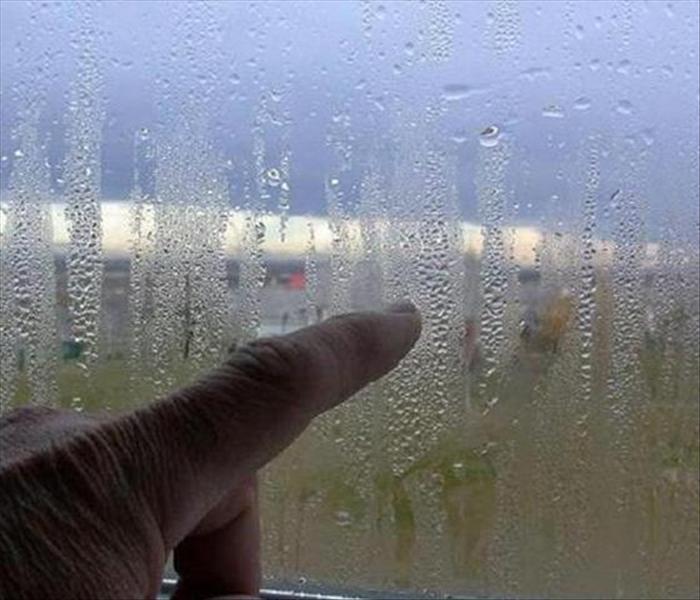High humidity problems, high moisture, condensation, window sweat? Here are some cause and solution tips for high humidity issues
4/29/2014 (Permalink)
When warm, excessively moist air inside your house contacts a cold surface, such as a pane of window glass or an exterior wall, the moisture condenses on that surface in the same way it does on a cold glass of lemonade on a hot, humid summer day. In most homes, a little bit of window condensation is not necessarily abnormal at the beginning of heating season. All summer long the building materials have been absorbing moisture from humid air flowing through. When we finally start to shut our windows and doors and begin to fire up heating plants for the winter, the interior air begins to dry out (some of this is due to infiltration of drier outside air) and the trapped moisture in the building materials begins to be released. As exterior temperatures begin to drop, so do temperatures of windows and exterior walls. This generally results in moisture showing up on these cold surfaces. In most homes, this is a temporary condition. It usually lasts two weeks or so, until the interior of the house dries out. However, ongoing and severe moisture are not normal and should be dealt with. Excess moisture in a house can be quite destructive; it can cause peeling paint, mold growth, and, in severe cases, rot of wood framing members. Here are a few tips to help prevent window condensation aka “window sweat”
- Keep humidity levels as low as you can—no higher than 50%--all day long. An air conditioner or dehumidifier will help you keep the level low. Humidity levels change throughout the day as changes occur in the moisture in the air and the air temperature, so check the humidity levels more than once a day.
- If you see condensation or moisture collecting on windows, walls or pipes ACT QUICKLY to dry the wet surface and reduce the moisture/water source. Condensation can be a sign of high humidity.
- Be sure your home has enough ventilation. Use exhaust fans, which vent outside your home in the kitchen and bathroom. Make sure your clothes dryer vents outside your home.
- Fix any leaks in your home’s roof, walls, or plumbing so mold does not have moisture to grow.
- Clean up and dry out your home thoroughly and quickly (within 24–48 hours) after flooding.
- Remove or replace carpets and upholstery that have been soaked and cannot be dried promptly. Consider not using carpet in rooms or areas like bathrooms or basements that may have a lot of moisture.
By following these tips above you can avoid high humidity issues in your home. For more information about dehumidification visit SERVPRO Cleanup & Restoration Dehumidification, call us today at (904) 729-2401 or get help online






 24/7 Emergency Service
24/7 Emergency Service
